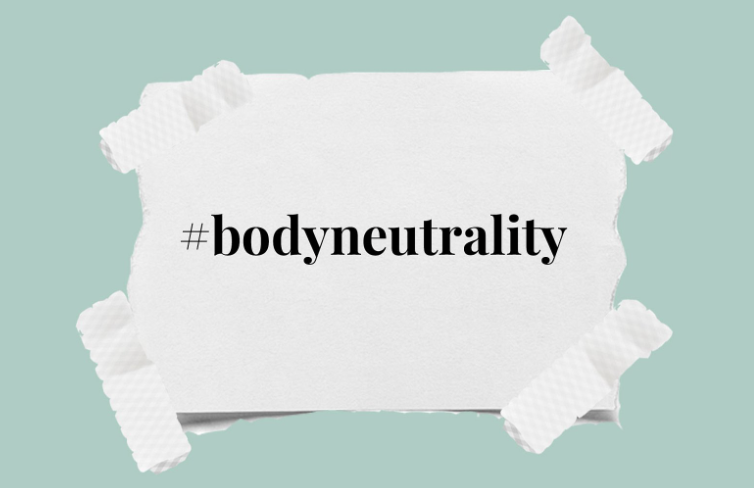The cosmetic company Dove recently reported that the total cost for upkeep of today’s beauty standards impacts the U.S. economy by $806 billion. You may ask what goes into this figure. While Dove did factor in everything from eyeliner to pimple patches to gym memberships, that is still quite a large amount of funds that are being spent to alter our appearances to propel ourselves towards a higher standard of physical beauty. As individuals that engage with pop culture and are constantly exposed to valuing our beauty with our appearance and the products we use, it feels like there are not any alternatives to this way of operating in society. To me, having a body meant that I had to engage with social media in a way that demonstrated my efforts to reach these standards. At least this was how I felt until my friend, Eleanor Antezana, enlightened me with the concept of body neutrality.
While having one of our many conversations about how we are supposed to make sense of the bodies that carry us around the world, Antezana declared she had discontinued body negativity and even body positivity, and only would continue to practice body neutrality. This made me wonder what removing the polarized perception of our bodies would really mean. According to Antezana, “It’s just my vessel!”
Beauty standards are constantly adjusting to fit those most sought after on social media platforms and within beauty and fashion industries. As a result, there have been an increasing number of individuals that experience dissatisfaction with their appearance while being bombarded with images of people who have looks that are frankly unattainable for the average person. The body positivity movement that originated in the 1960s has become a source for coping with the stress that is perpetuated by modern beauty standards. Despite the inclusive and supportive nature of this movement, there are still components of this perspective that might be working against the well-being of individuals in society.
By projecting subjective outlooks on our bodies, no matter if they are good or bad opinions, we take away from the fact that the body is simply an objective matter that gives us the opportunity to experience life. We spend a lot of time — and maybe even more money — on trying to look good, sexy or beautiful. Instead of prioritizing fitting into a beauty standard or accepting a body that is not in line with these expectations, we should recognize that having a healthy body that allows us to move in ways that feel good, sexy and beautiful will provide us with more fulfillment.
Of course this is easier said than done. I admit that I have spent my fair share of money on cosmetics, clothing and services that I think will inch me closer to an ideal appearance. For transparency’s sake, I spend $20–30 a month on cosmetics, $40–50 every other month on skincare and hair products, $20–60 a month on clothing, about $200 a year on gym memberships and exercise materials and far too much mental energy on diet and nutrition. Despite this hefty price tag, I always seem to find that I feel happiest when I respect my body for what it does for me rather than trying to alter it in a way that is not true to its own health and well-being.
Do not get me wrong. I have no intentions of scaling back the amount of colorful eyeliner pens I can stuff into my makeup box, and I am whole-heartedly a sucker for some body glitter. To me body neutrality is not about devaluing our appearance, but about shifting the focus from having to alter or accept our bodies in some way to just letting them be – as the powerful, living, breathing figures that they are. To return to the concept of bodies simply being a vessel, it is important to remember that in the middle of the ocean, it does not matter if your ship is particularly easy on the eyes, it only matters if it can give you a way to explore the world.




